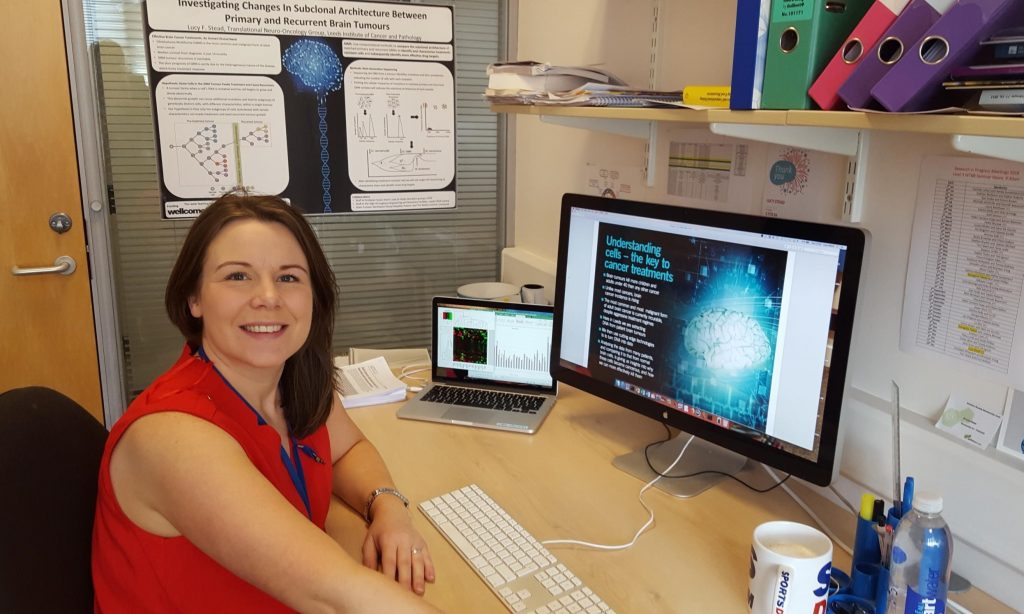Using nanobiopsy to see how tumours change during treatment
Fast Facts
- Title: Using nanobiopsy of single brain tumour cells to assess transcriptional reprogramming during standard therapy
- Lead Researchers: Dr Lucy Stead
- Where: University of Leeds
- When: December 2018- June 2022
- Cost: £119,690
- Research type: Adult, Glioblastoma (High Grade) Academic
- Grant round: Expanding theories
What is it?
This project is using advanced technology called nanobiopsy to extract tiny samples from living cells without killing them.
Over the course of treatment, the team – led by Dr Lucy Stead at University of Leeds – will be able to take samples to see how the tumour changes.
The technique
In the lab, a small amount of material is taken from within a single tumour cell, and a very small amount of dye is added into the cell so the researchers can find it again later. The tumour cells are then treated with radiation and chemotherapy to mimic a patient’s treatment. Afterwards, another small amount of cellular material is taken from the same cell. Both samples are compared to find out how the treatments have changed the cell.
Why is it important?
Glioblastomas are the most common, and one of the most aggressive types of brain cancer found in adults. The standard treatment involves surgery to remove as much of the tumour as possible, followed by radiotherapy and chemotherapy.
However, the tumour always grows back, so we need to understand why these treatments are failing.
What we don’t know is whether glioblastoma cells are naturally resistant to treatment or whether treatments cause changes within the cells that make them resistant.
By analysing the same cell before and after treatment, we can see if there are changes which make it resistant to treatment, or if the treatment was never going to kill the tumour completely. When we know this, we can find new treatments that will work better.
Who will it help?
People with glioblastoma, now and in the future.
I am a computational brain tumour biologist and my research team’s goal is to identify and characterise the specific brain tumour cells that currently resist treatment so we can develop more effective drugs to kill them.
Dr Lucy Stead, University of Leeds
Milestones
2018-2021
- The team have now adapted this technology for GBM cells, using an approach where they inject dye into the cell and extract material at the same time.
- They have been able to use the material extracted to learn more about a cell, without killing it, which means they can then resample the same cell.
- Having completed this with cells that have received treatments, and those that have not, the team will now analyse the data in order to learn about the effect of treatment on cells.
2022
- This research revealed that cells can change into different types without dividing and staying in the same spot.
- Findings show that certain molecules inside cells, that help cells survive treatment and avoid being killed can turn on or off when treated.
- Results have also shown that certain molecules might help cells adapt and survive in the face of treatment.
How will my money help?
- £6 could pay for two nanopipettes – one to sample a cell before treatment, and one for after
- £60 could pay for an hour on the machine that helps to sort single cells
- £300 could pay for a special dye that helps us to track individual cells, so they can be retested after treatment
- £1,135 could pay for a lane on a sequencing machine which will profile 96 single cells in one go
In this section

Recommended reading
